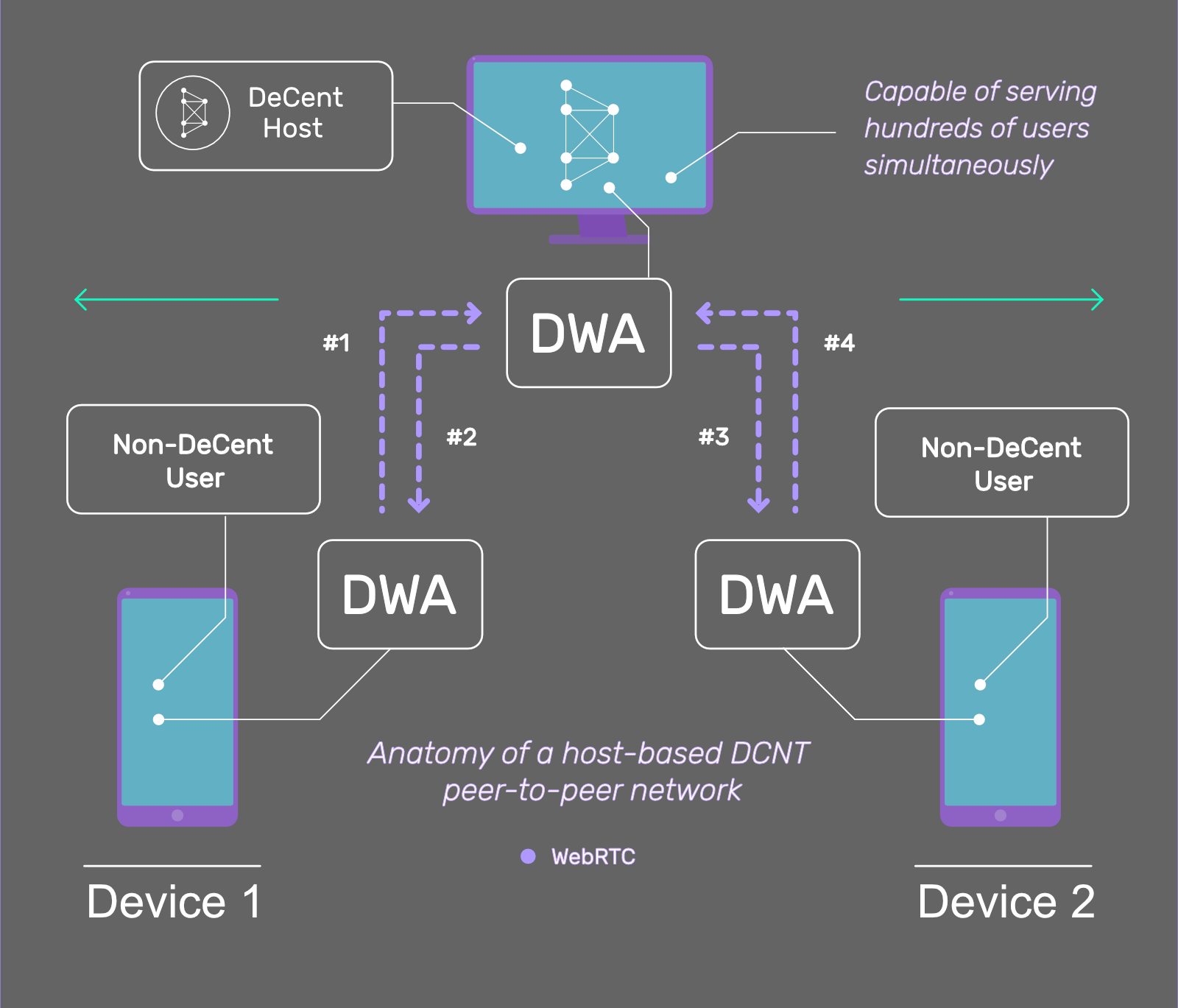Where are you thinking this operating cost is coming from?
There are types of applications that can not presently be built with DWAs, but that doesn’t mean that will be the case for much longer. It’s not due to a technical impossibility, rather a lack of existing libraries to make it easily done. No one has built it yet, that’s all. I’ll get there if someone else doesn’t beat me to it.
Here is a diagram of how asynchronous messaging can work:

It will scale horizontally as high as the host browser will allow (in WebRTC connections), taking into account the host machine. If the connections are not persistent, and are rolling/transient, then one instance could probably serve thousands of users simultaneously.
You can use this topology to do a lot. You’re not limited to just messaging, a Discord clone or anything group-oriented would be very simple this way, for example.


Hey, thanks for the kind words. You will be seeing a lot more of it over the next month, it’s going to get pretty exciting, I think!
I’m not sure if you’ve seen the specific project repos yet or not, but they strike a more serious tone than the main project repo or project website. If you haven’t seen these, they may have a bit more of what you’re looking for:
Here is a WIP of the DCNT protocol overview: https://github.com/futurehood/DCNT
Here is the DeCent-Core repo, you may be interested in looking through the User Guide if you haven’t already: https://github.com/futurehood/DeCent-Core
Here’s a diagram of the most basic Web420 network too:
I’m afraid you will be disappointed when you see the DeCent-Core source code, there’s nothing fancy there! It’s a simple HTTP/WSS server (Ktor/Netty) that implements the DCNT protocol, and provides a UI for managing server profiles, and installed apps. The installed apps are straight downloaded and extracted ZIP archives stored on disk - super simple. The DCNT server’s role is very small, it’s just there to connect browsers/DWAs by signaling WebRTC connections, that’s it. Once the WebRTC connection is established the DWA can disconnect from the DCNT server until it needs to signal again. If you get the gist of the DCNT protocol overview, you basically already understand the server. I know you all are waiting to see that anyway though, I’ll get it out as quickly as I can.
I’m not going to start working on the social network or streaming service until after DeCent-Core is released. Those are just ideas I’m bouncing around too, the next DWA project from me might end up being something completely different. Getting DeCent Messenger fully-featured and finishing up the DeCent-Core refactor to drop the code are my only priorities at the moment.